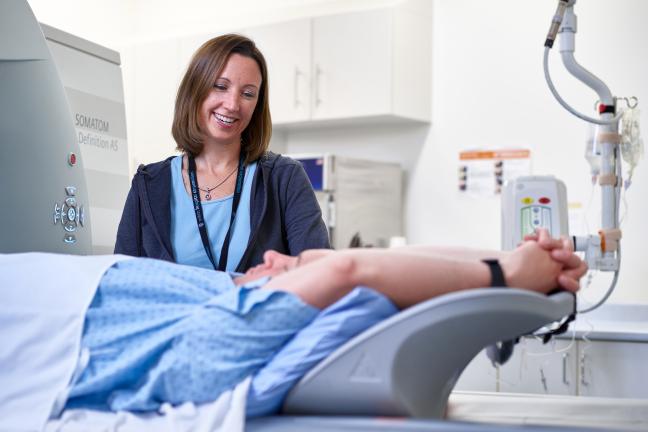How it Works
During a CT scan, a thin beam of radiation is focused on the specific body part to be studied. The X-ray tube moves completely around this body part as the table moves the patient through the scanner. This creates multiple cross sectional images, which are sometimes compiled into 3-D images when necessary. Due to the precision of these exams, the patient must lie completely still.
The cross-sectional images are produced and manipulated with the aid of advanced computers to allow a thorough picture of the patient's anatomy.
How to Prepare
- Arrive 15 minutes before your appointment
- Bring your Yukon health care card
- Go directly to the marked CT department at the far end of the main atrium as you head towards the WGH Emergency Department.
- Notify your technologist before your exam if you are breastfeeding, pregnant or think you may be pregnant
Preparing for a CT Colonography?
- Learn more about the benefits, risks, what to expect, how to prepare and more with this helpful guide (PDF).
